|
| | Stink Bugs -
Family Pentatomidae
- The pentatomids are known as Stink Bugs or Shield Bugs. They are
frequently found in large numbers on crops and weeds. If disturbed, they will emit a pungent, evil-smelling liquid. They
are mostly brown, some are greenish, although a few are highly coloured.
-
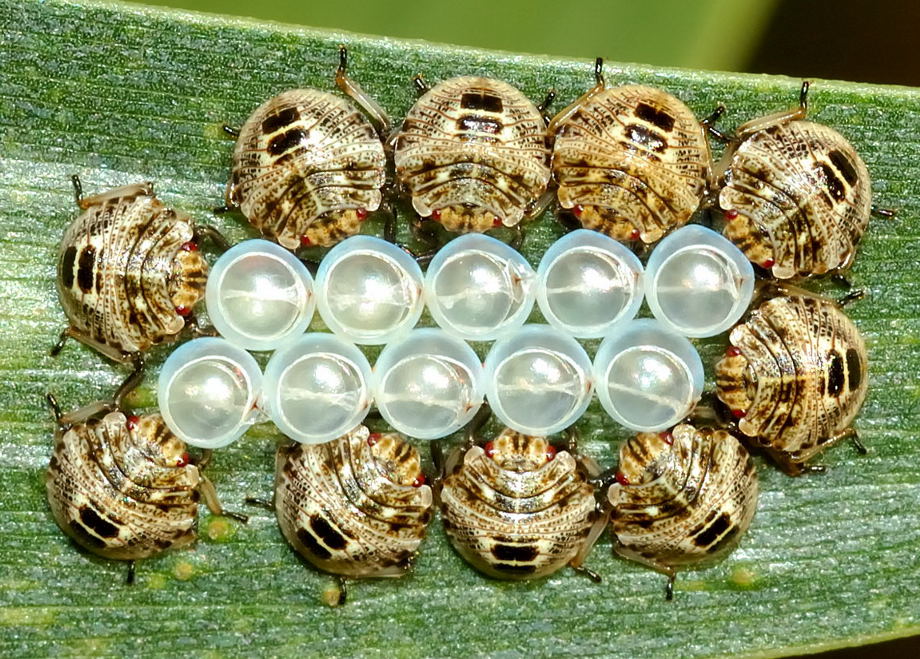 - Stink Bug 1st instars
-
- Stink bugs are distinguished from other bugs by their 3rd thorax, or the
triangular scutellum, which is well extended to cover half of their back, but
not covered the whole abdomen. Their legs are thin and with no spines. The antennae are
four or five segmented. Their body are usually in shield-shaped. Nymphs
look similar to their adults except they are wingless.
-
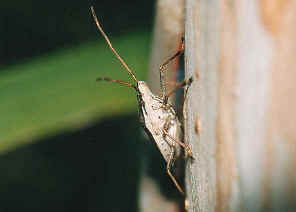 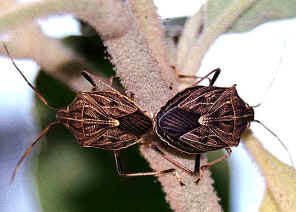 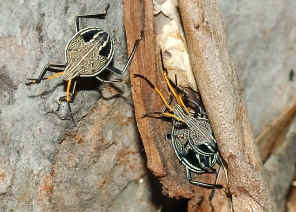 - Scent gland
opening Mating pair
Nymphs hiding under bark
-
- The 'stink' evil-smelling
liquid comes from the bug's scent glands. In adults the scent gland openings are located
under each side of thorax, between the first and second pair of legs.
In nymphs the scent gland openings are paired and located on the top of
abdomen. The
smell is from the discharged fluid which
contains an oily component cimicine, which is a very volatile
component. Those stink liquid will discourage or even harm the potential
predators.
-
-
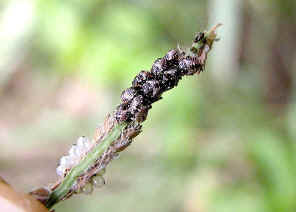 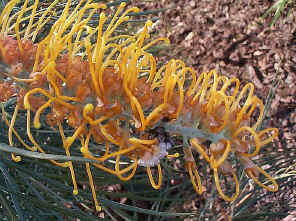 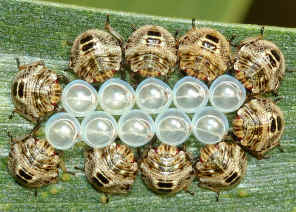
- Newly hatched stink bugs
-
- Stink bugs mating occurs in spring and/or summer, depending on
the species. Eggs are laid in tight clusters glued to a host
plant, usually on the underside of leaves or under barks. After hatching, the first instars
often stay together with the empty egg-shell until they moult become the second instars.
Then they disperse in search of food. Nymphs undergo five
metamorphoses to become adults.
-
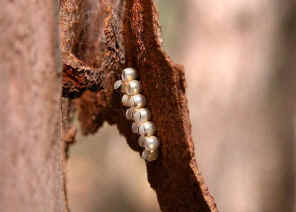 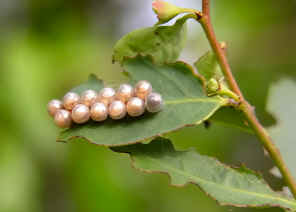
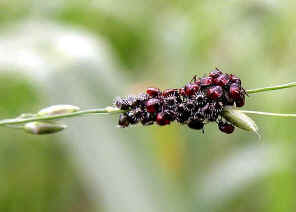 - Different Stink Bug eggs
-
- Most of the Stink Bug species are
plant suckers although some are predators to other insects. Some species in this
family exhibit maternal care by standing guard
over their egg batches.
-
- All Stink Bugs are active during the day. They have a number of natural enemies,
some species their eggs suffer parasites by
wasps.
-
- We found quite a number of Stink Bug species in Brisbane. They are listed in
the following pages;
-
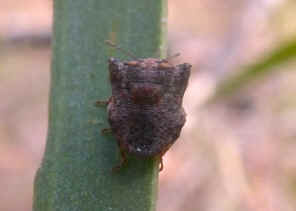 Subfamily Podopinae - Small Brown
Stink Bugs Subfamily Podopinae - Small Brown
Stink Bugs- We found two species in this subfamily.
-
-
-
-
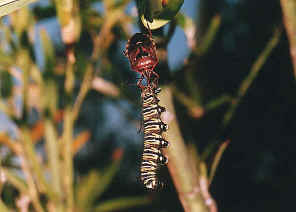 Subfamily Asopinae - Predatory
Stink Bugs Subfamily Asopinae - Predatory
Stink Bugs- Most of the
stink bug species are plant suckers, however bugs in this subfamily are
predators. They prey on soft insects including caterpillars.
-
-
-
-
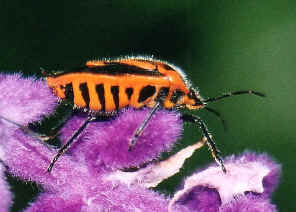 Subfamily Pentatominae - Stink
Bugs Subfamily Pentatominae - Stink
Bugs- We found quite
a number of Stink Bug species in Brisbane. Most of them are in this subfamily.
Most of them feed on plants and are in shield shape.
-
-
-
 Unidentified Stink
Bugs Unidentified Stink
Bugs - Please advise
if you known the ID of the stink bugs in this page.
-
-
-
-
-
-
- To
quickly identify the Stink Bug that you found, try our Field
Guide page.
- Reference:
- 1. Insects
of Australia, CSIRO, Division of Entomology, Melbourne University
Press, 2nd Edition 1991, pp 508.
- 2. PENTATOMIDAE - Australian Biological Resources Study, Australia, 2002.
- 3. Pentatomoidea Home
page - David A. Rider, Professor of Entomology, North Dakota State University.
- 4. Plant-feeding and Other Bugs (Hemiptera) of South Australia. Heteroptera – Part I & II - by Gordon F. Gross, South Australian Government Printer, Adelaide,
1975/1976.
[ Up ] [ Biology ] [ Field Guide ] [ Family Cydnidae ] [ Family Tessaratomidae ] [ Family Scutelleridae ] [ Family Pentatomidae ]
Back to top
| |
|










 Subfamily Podopinae - Small Brown
Stink Bugs
Subfamily Podopinae - Small Brown
Stink Bugs Subfamily Asopinae - Predatory
Stink Bugs
Subfamily Asopinae - Predatory
Stink Bugs Subfamily Pentatominae - Stink
Bugs
Subfamily Pentatominae - Stink
Bugs Unidentified Stink
Bugs
Unidentified Stink
Bugs 